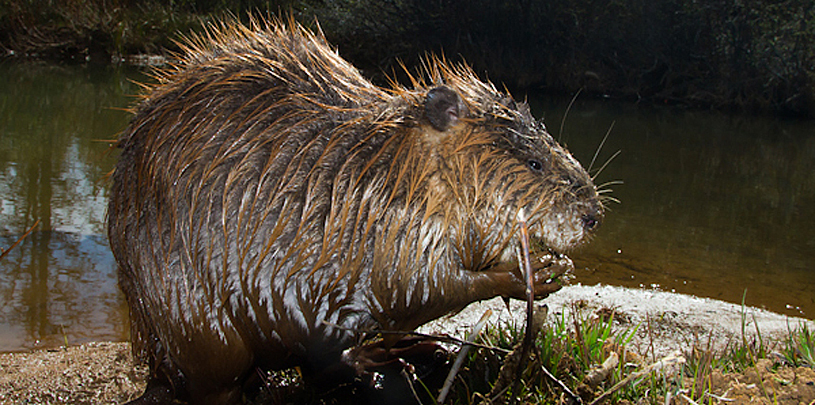Yesterday we had arranged a meeting between two Watershed Stewards Program Americorp interns and the city engineer of Martinez to talk about planting willow in the beaver habitat. It all became possible after my presentation at the San Francisco water board in December. Rebecca and Corie took Amtrak out from Oakland and we gave them a tour of the planting areas and beaver dam before taking them to the meeting. On the way we came across the most darling little beaver chews from our 2014 kit that we presented as souvenirs (along with hats, which were much appreciated, as you can see).
 Then we sat down to what we expected to be a challenging meeting. Historically it has not been simple to negotiate with the city to put trees in the beaver habitat. (Take from that what you will-it’s almost like they don’t want the beavers to stay!) But we were hopeful that having some professionals in uniform might make it easier. We talked a little about the areas we wanted to plant, and then discussed the ideas I had encountered regarding fascines at the beaver conference, which prompted our interns to talk about their recent projects at Baxter and Strawberry Creek where they had used fascines of both willow and dogwood.
Then we sat down to what we expected to be a challenging meeting. Historically it has not been simple to negotiate with the city to put trees in the beaver habitat. (Take from that what you will-it’s almost like they don’t want the beavers to stay!) But we were hopeful that having some professionals in uniform might make it easier. We talked a little about the areas we wanted to plant, and then discussed the ideas I had encountered regarding fascines at the beaver conference, which prompted our interns to talk about their recent projects at Baxter and Strawberry Creek where they had used fascines of both willow and dogwood.
We talked about timing and their experience, and then the city engineer said he would handle things with the council and with Fish and Game and we could get the project moving within two weeks.(!) They would do the planting and get the willow cuttings, and encourage some colleagues to help out on the day. We promised to reward everyone with hats if they did! And then the meeting was over. Approximately 15 glorious minutes after it started.
No, really.
Jon and I were in varied states of amazement. To say that was not the reception we’d been expecting is a significant understatement. But I swear it really happened. And we are on board to get willow in the ground before the middle of March. Riley will help arrange for them to harvest it from wildcat canyon in Berkeley, and they will make the fascines and plant them. (Just pray that it rains SOMETIME along the way.) And thank you to Riley for sending these hardworking city-soothers our way. This video will teach you about what facines are, and this one could show you the magical way they work in less than 3 weeks! Our fascines will be buried in the unrocky bank.
Still don’t believe it? The day needs more incredulity, so I’m going to show you the very best beaver news out of Canada that was ever filmed. I can’t find a date on this story, and can’t embed it so you will need to perform the onerous labor of clicking on it and watching an ad, but trust me, even if you never trusted me before and never will again, it’s worth it.
 Starving beavers kept alive by couple after dam destroyed
Starving beavers kept alive by couple after dam destroyed
Don’t you LOVE these people? Someone give them a bag of sweet potatoes right away!
Fnally I got a delightful email from Rusty in Napa yesterday because the beaver pond in Tulocay creek was visited by a whopping 5 pairs of hooded mergansers that evening. He was surprised how people shy they were in such an urban setting. But very kindly shared these photos. The beautiful one is the boy, and the rusty hairdo is the female. Enjoy.




















































